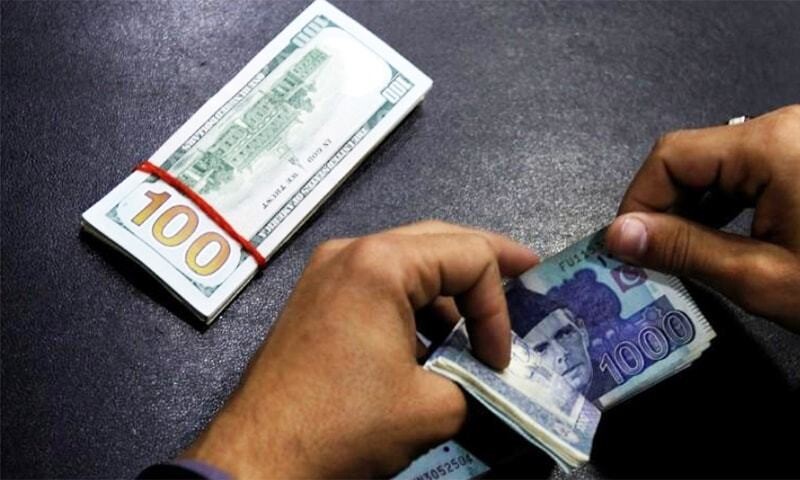- The Australian Dollar receives support from the increased risk sentiment on Wednesday.
- Fed member Kugler indicated rates will be maintained longer if upcoming data does not confirm a slowdown in inflation.
- Australia’s 10-year government bond yield steadies around 4.2%, its lowest level in three weeks.
The Australian Dollar (AUD) recovers its daily losses on Wednesday. However, the AUD/USD pair has faced challenges due to a modest rebound in the US Dollar (USD), likely influenced by a hawkish speech from Federal Reserve (Fed) Board of Governors member Dr. Adriana Kugler on Tuesday.
In her remarks, Dr. Kugler acknowledged that inflationary pressures have eased but emphasized that the Fed still needs additional data to justify a rate cut. Kugler indicated that if upcoming data does not confirm that inflation is moving toward the 2% target, it may be appropriate to maintain current rates for a while longer.
The AUD/USD pair could face challenges as investors reduce their expectations for a Reserve Bank of Australia (RBA) rate hike. Despite this, the central bank is still anticipated to delay joining the global rate-cutting cycle. Investors are now focused on Australian employment numbers, due on Thursday, to gain further insights into the monetary policy outlook.
On the US front, traders await key US economic data and the Fed Beige Book on Wednesday, alongside speeches from Fed officials Thomas Barkin and Christopher Waller.
Daily Digest Market Movers: Australian Dollar receives pressure from a hawkish Fed member
- Australia’s 10-year government bond yield steadies around 4.2%, its lowest level in three weeks, mirroring a decline in US bond yields. This followed comments from Federal Reserve Chair Jerome Powell, which strengthened the case for a rate cut by the US central bank in September.
- During an interview with Bloomberg News on Tuesday, Donald Trump cautioned Fed Chair Jerome Powell against cutting US interest rates before November’s presidential vote. However, Trump also indicated that if re-elected, he would allow Powell to complete his term if he continued to “do the right thing” at the Federal Reserve.
- On Monday, Fed Chair Powell stated that the three US inflation readings from this year “add somewhat to confidence” that inflation is on track to meet the Fed’s target sustainably, suggesting that a shift to interest rate cuts may be imminent.
- The US Retail Sales for June stayed mostly the same for the central bank’s expectations. Retail Sales in the United States held steady at $704.3 billion in June, after a 0.3% gain (revised from 0.1%) in May, and are in line with market expectations.
- The third plenum of the Chinese Communist Party’s 20th National Congress continues today, being held from July 15 to 18. Standard Chartered expects cuts from the People’s Bank of China, both in rates and the reserve requirement ratio (RRR), as GDP growth decelerated in Q2. China’s growth drivers remain uneven, and trade tensions are rising, with the US and EU imposing new tariffs on Chinese electric vehicles (EVs).
- Fed Bank of San Francisco President Mary Daly stated that inflation is cooling down in a way that bolsters confidence that it’s on its way to 2%. However, Daly added that more information is needed before making a rate decision.
- In China, a close trade partner of Australia, Gross Domestic Product (GDP) grew 4.7% year-over-year in the second quarter, compared to a 5.3% expansion in the first quarter and an expected 5.1%.
- The National Bureau of Statistics (NBS) reported that China’s economy operated generally steadily in the first half of the year, with H1 GDP growth at +5.0% year-on-year. Looking ahead, the NBS highlighted increasing external uncertainties and numerous domestic challenges that China’s economy faces in the second half of the year.
Technical Analysis: Australian Dollar holds ground near 0.6750
The Australian Dollar trades around 0.6740 on Wednesday. The daily chart analysis shows that the AUD/USD pair consolidates within an ascending channel, indicating a bullish bias. However, the 14-day Relative Strength Index (RSI) declines toward the 50 level, suggesting a correction. A further decline could weaken the bullish trend.
The AUD/USD pair may test the psychological level of 0.6800. A breakthrough above this level could support the pair to approach the upper boundary of the ascending channel near 0.6820.
On the downside, immediate support appears around the 21-day Exponential Moving Average (EMA) at 0.6710. Further support is seen near the lower boundary of the ascending channel at 0.6700. A break below this level could push the AUD/USD pair toward the throwback support at 0.6590.
AUD/USD: Daily Chart
Australian Dollar PRICE Today
The table below shows the percentage change of Australian Dollar (AUD) against listed major currencies today. Australian Dollar was the strongest against the British Pound.
| USD | EUR | GBP | JPY | CAD | AUD | NZD | CHF | |
|---|---|---|---|---|---|---|---|---|
| USD | -0.04% | 0.04% | -0.11% | 0.01% | -0.07% | -0.28% | 0.00% | |
| EUR | 0.04% | 0.09% | -0.09% | 0.05% | -0.03% | -0.29% | 0.05% | |
| GBP | -0.04% | -0.09% | -0.16% | -0.03% | -0.12% | -0.38% | -0.03% | |
| JPY | 0.11% | 0.09% | 0.16% | 0.12% | 0.05% | -0.20% | 0.13% | |
| CAD | -0.01% | -0.05% | 0.03% | -0.12% | -0.08% | -0.31% | 0.00% | |
| AUD | 0.07% | 0.03% | 0.12% | -0.05% | 0.08% | -0.23% | 0.08% | |
| NZD | 0.28% | 0.29% | 0.38% | 0.20% | 0.31% | 0.23% | 0.31% | |
| CHF | -0.00% | -0.05% | 0.03% | -0.13% | -0.00% | -0.08% | -0.31% |
The heat map shows percentage changes of major currencies against each other. The base currency is picked from the left column, while the quote currency is picked from the top row. For example, if you pick the Australian Dollar from the left column and move along the horizontal line to the US Dollar, the percentage change displayed in the box will represent AUD (base)/USD (quote).
Australian Dollar FAQs
One of the most significant factors for the Australian Dollar (AUD) is the level of interest rates set by the Reserve Bank of Australia (RBA). Because Australia is a resource-rich country another key driver is the price of its biggest export, Iron Ore. The health of the Chinese economy, its largest trading partner, is a factor, as well as inflation in Australia, its growth rate and Trade Balance. Market sentiment – whether investors are taking on more risky assets (risk-on) or seeking safe-havens (risk-off) – is also a factor, with risk-on positive for AUD.
The Reserve Bank of Australia (RBA) influences the Australian Dollar (AUD) by setting the level of interest rates that Australian banks can lend to each other. This influences the level of interest rates in the economy as a whole. The main goal of the RBA is to maintain a stable inflation rate of 2-3% by adjusting interest rates up or down. Relatively high interest rates compared to other major central banks support the AUD, and the opposite for relatively low. The RBA can also use quantitative easing and tightening to influence credit conditions, with the former AUD-negative and the latter AUD-positive.
China is Australia’s largest trading partner so the health of the Chinese economy is a major influence on the value of the Australian Dollar (AUD). When the Chinese economy is doing well it purchases more raw materials, goods and services from Australia, lifting demand for the AUD, and pushing up its value. The opposite is the case when the Chinese economy is not growing as fast as expected. Positive or negative surprises in Chinese growth data, therefore, often have a direct impact on the Australian Dollar and its pairs.
Iron Ore is Australia’s largest export, accounting for $118 billion a year according to data from 2021, with China as its primary destination. The price of Iron Ore, therefore, can be a driver of the Australian Dollar. Generally, if the price of Iron Ore rises, AUD also goes up, as aggregate demand for the currency increases. The opposite is the case if the price of Iron Ore falls. Higher Iron Ore prices also tend to result in a greater likelihood of a positive Trade Balance for Australia, which is also positive of the AUD.
The Trade Balance, which is the difference between what a country earns from its exports versus what it pays for its imports, is another factor that can influence the value of the Australian Dollar. If Australia produces highly sought after exports, then its currency will gain in value purely from the surplus demand created from foreign buyers seeking to purchase its exports versus what it spends to purchase imports. Therefore, a positive net Trade Balance strengthens the AUD, with the opposite effect if the Trade Balance is negative.








